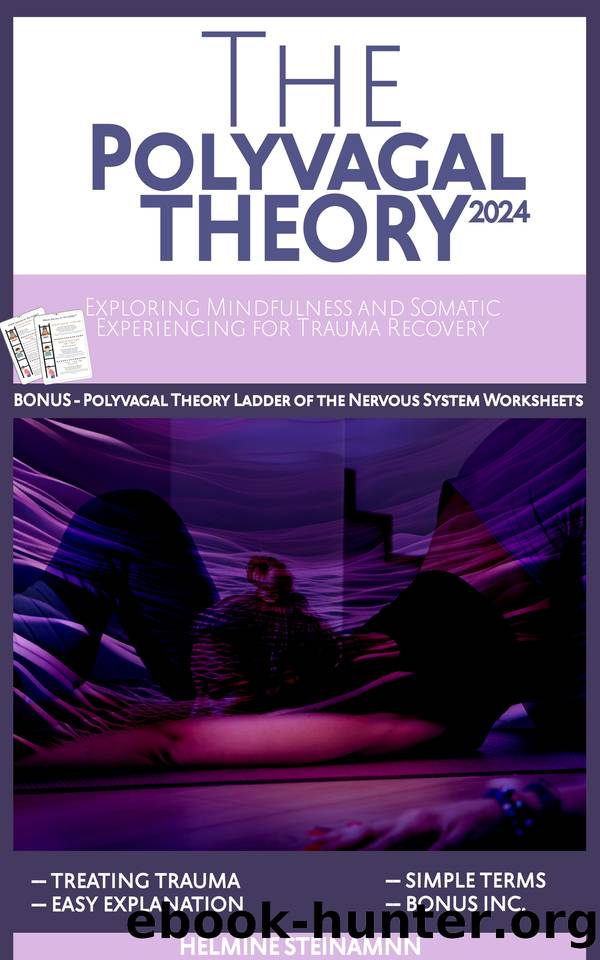The Polyvagal Theory: Exploring Mindfulness and Somatic Experiencing for Trauma Recovery by Steinmann Helmine

Author:Steinmann, Helmine
Language: eng
Format: epub
Publisher: Helmine Steinmann
Published: 2023-10-20T00:00:00+00:00
ADAPTING COPING STRATEGIES FOR DIVERSE NEUROTYPES
The realm of human neurodiversity is as expansive as it is unique, mirroring the numerous stars that bedeck the night sky. Each individual harbors a distinct neurotype, which, like a fingerprint, sets them apart. In the endeavor to manage stress and foster mental tranquility, the one-size-fits-all approach crumbles in the face of human neurological diversity. Tailoring coping strategies to resonate with the unique neurological blueprint of an individual becomes not just prudent, but essential.
The first stride in this tailored approach is acknowledging and understanding the neurodiversity that exists among us. Individuals on the autism spectrum, those with Attention-Deficit/Hyperactivity Disorder (ADHD), dyslexia, and other diverse neurotypes perceive and interact with the world in a manner that's distinct from neurotypical individuals. The coping strategies, hence, need to be as diverse as the neurotypes they aim to serve.
A person with ADHD, for instance, might find solace in strategies that harness their dynamic energy rather than suppress it. Techniques such as mindful movement or sports that channel their vitality in a positive direction could prove beneficial. On the other hand, individuals on the autism spectrum might find structured, predictable coping strategies more comforting. Techniques that mitigate sensory overload, such as mindfulness meditation or sensory-friendly spaces, can be a haven in the bustling world.
Moreover, dyslexic individuals might find expressive outlets like art or music therapy as a way to navigate through the stressors, providing a medium through which they can express themselves with ease and creativity.
Moreover, a dialogue between the therapist and the individual is quintessential to unearth the coping strategies that resonate the most with the individualâs neurotype. It's a collaborative endeavor where the wisdom of the therapist meets the lived experience of the individual, crafting strategies that are as unique as the individualâs neurological blueprint.
Furthermore, technology has also unfurled a new horizon of possibilities. Apps and devices tailored to support diverse neurotypes have mushroomed, offering tools that assist in managing stress and anxiety. For instance, assistive technology can provide structured, visual schedules for individuals on the autism spectrum, aiding in creating a predictable environment which is often comforting.
Download
This site does not store any files on its server. We only index and link to content provided by other sites. Please contact the content providers to delete copyright contents if any and email us, we'll remove relevant links or contents immediately.
| Codependency | Conflict Management |
| Dating | Divorce |
| Friendship | Interpersonal Relations |
| Love & Loss | Love & Romance |
| Marriage | Mate Seeking |
Doing It: Let's Talk About Sex... by Hannah Witton(8551)
The 5 Love Languages: The Secret to Love That Lasts by Gary Chapman(8502)
Should I Stay or Should I Go? by Ramani Durvasula(6785)
The Road Less Traveled by M. Scott Peck(6638)
The Lost Art of Listening by Michael P. Nichols(6475)
Daring Greatly by Brene Brown(5643)
We Need to Talk by Celeste Headlee(4872)
Beartown by Fredrik Backman(4421)
Men In Love by Nancy Friday(4330)
The State of Affairs by Esther Perel(3932)
The Rules Do Not Apply by Ariel Levy(3908)
How To Win Friends and Influence People by Dale Carnegie(3772)
Reflections Of A Man by Mr. Amari Soul(3703)
The Ethical Slut by Janet W. Hardy(3504)
Algedonic by r.h. Sin(3504)
Pillow Thoughts by Courtney Peppernell(3400)
Finding My Forever by Heidi McLaughlin(3307)
He's Just Not That Into You by Greg Behrendt & Liz Tuccillo(3303)
I Love You But I Don't Trust You by Mira Kirshenbaum(3230)
